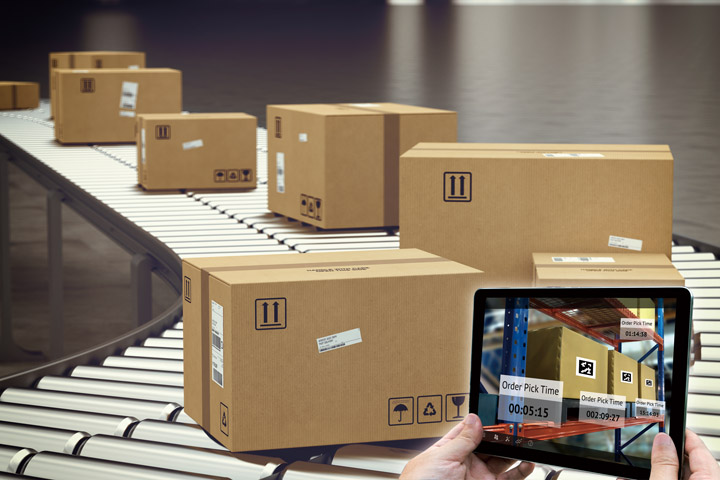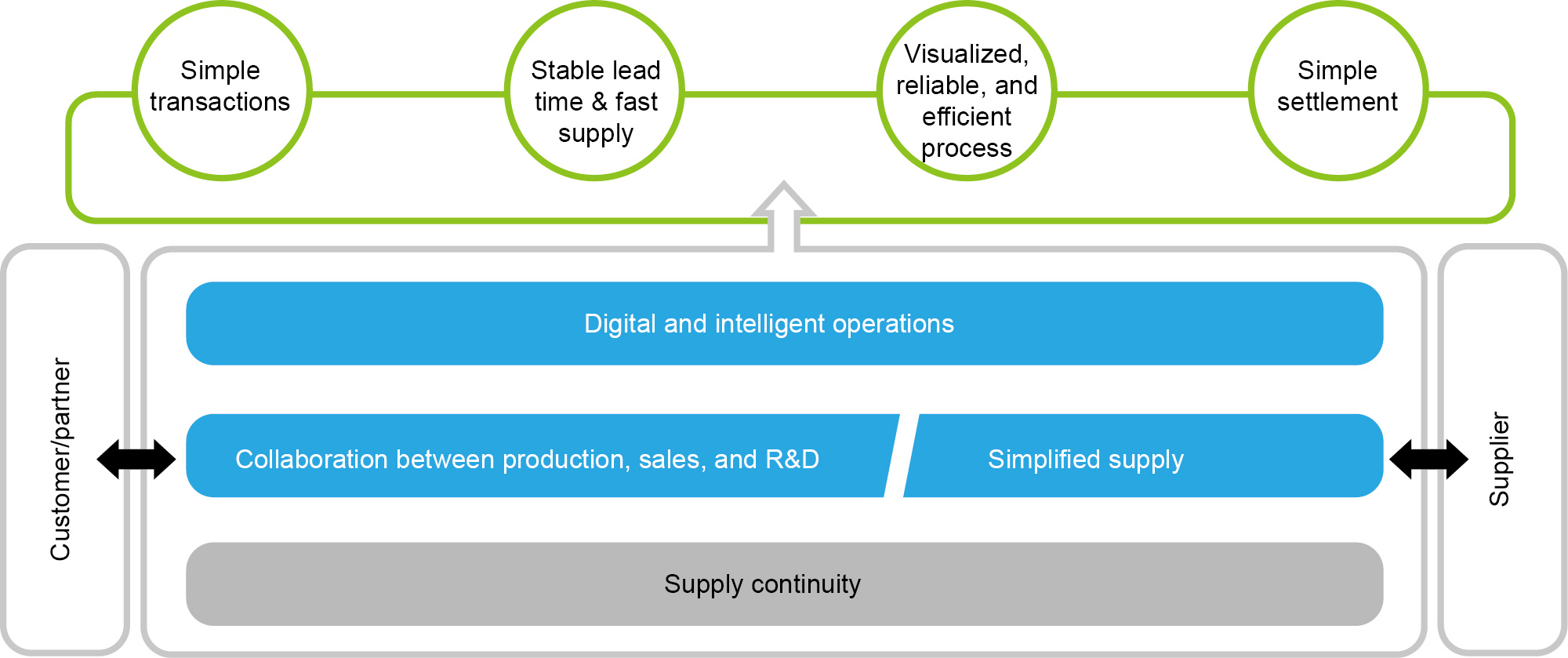Building Digital, Proactive Supply Chains with Continuous, Efficient, and Secure Characteristics
Enterprise products, solutions & services

In 2019, Huawei faced mounting external challenges that tested its supply chain management. Despite this pressure, however, it maintained business continuity. Huawei’s Enterprise Business Supply Chain Group went even further, developing corporate supply chain policies, and deploying strategies such as production-sales coordination and digital, intelligent operations. Indeed, Huawei’s partners have grown more and more confident in the company’s ability to build digital, proactive supply chains and provide both its partners and customers with B2C experience in B2B business.
In a world of political and economic instability, every industry requires supply chain continuity, security, and reliability. In particular, continuity is essential throughout the entire supply chain, from raw material procurement production to logistics. Yet it is becoming more challenging to establish supply chains with efficient, end-to-end processes that guarantee material availability, manufacturing productivity, and product delivery.
Meanwhile, those supply chains are becoming progressively more complex, with growing uncertainties and a huge gap between supply and demand. As raw material supply chain lead times increase and companies form regional clusters, it becomes increasingly difficult for enterprises to quickly deliver goods around the world. As a leader in the 5G era, it is Huawei’s duty to facilitate the Information and Communications Technology (ICT) industry’s supply chain growth by helping suppliers improve their production, onsite management, planning, and end-to-end supply chain management capabilities.
Huawei’s supply chain has consistently provided customer services in compliance with local laws and regulations. To date, Huawei has signed contracts for more than 50 5G projects worldwide. Meanwhile, shipment volumes of flagship products — in wireless networking, optical transmission, data communications, and IT domains — have grown rapidly. This has been achieved using Huawei’s long-term Business Continuity Management (BCM) system and diversified supply policies.
In terms of product supply, Huawei ensures continuity by adopting diversified technical plans, multi-region supply strategies, and multi-level planning inventory management systems. Huawei has also established multiple supply centers and designed global supply networks that integrate regional warehouses (also known as hubs) and logistics routings, to ensure service continuity for customers.
Meanwhile, Huawei has set up an end-to-end BCM process by aligning the BCM system with suppliers and customers, while also ensuring the company understands process implementation responsibilities. This has greatly improved supply chain resilience and continuity.
Huawei’s foundation is built on supply continuity. Huawei’s supply chain strategy aims to build digital, proactive supply chains while delivering supply continuity. The B2C experience for B2B partners and customers is improved by adopting simple transaction and settlement processes, allowing them to receive stable lead times and quick product delivery.
Huawei’s digital, proactive supply chain strategy includes the following:
Huawei adopts a component/modular-based product design model to streamline the integration design process for customers, partners, and suppliers alike, allowing customers to flexibly assemble standardized product modules based on their exact requirements. Huawei has replaced the traditional one-size-fits-all operating model with different product/industry-specific operating models to create distinct supply chain advantages.
Collaboration with customers and partners to improve supply value chain services is key for Huawei. Before contracts are signed, parties need to discuss configuration alignment, planning, and capability and resource visualization. This ensures contract confidence while reducing supply uncertainty. Huawei aligns its data, processes, and systems with partners, enabling simplified information sharing and end-to-end visualization.
Huawei delivers a simplified supply chain experience by integrating production, sales, and R&D, implementing supply value chain collaboration, and building automatic, simplified supply chain models with self-restoring, self-optimizing, and self-adapting capabilities. This helps prevent supply network decoupling and supports self-adaptive planning, proactive order management, and efficient logistics.
Huawei builds Intelligent Operation Centers (IOCs) that are scenario-based, hierarchical, and flexibly configured, in order to form a digital twin with the physical world. Instructions can be transferred to physical operation sites by applications, algorithms, and models that operate in the digital world in real time.

Figure 1: Huawei’s supply chain strategy
Huawei adheres to its enterprise business supply chain strategy, achieving success in diverse scenarios by adapting the strategy to address different factors, including products, customers, and business models.
Huawei — in collaboration with partners — has established an interlocked supply-demand mechanism that includes a clear set of rules. It determines the supply amount to deliver to partners after determining their requirements at the beginning of each quarter. By using forecast-based planning management and Available-To-Promise (ATP) capability visualization, Huawei guides partners on order placement cycles and order amounts. To date, the average lead time is 4.7 days, and the SLA fulfillment rate within seven days is 93 percent.
Huawei establishes fast fulfillment capabilities for its regional distribution centers (GLP), in low-end and mid-range enterprise IP (data communications) products.
GLP’s entire stock is assembled as a set, using Product Configuration Instance (PCI) design and planned maximum/minimum inventory models. The traditional make-to-order model has been transformed to a supply-from-stock model using automatic production scheduling, with a commitment to fulfilling orders. Furthermore, through ‘clean order’ management, Huawei helped improve GLP’s preparation capabilities, enabling orders to be immediately shipped following assembly.
GLP’s one-day finish production rate and three-day delivery rate has seen significant improvements, covering 65.5 percent of shipped low-end and mid-range IP products in China.
Huawei collaborates with Key Named Accounts (KNAs) and industry customers in project supply solution planning, and ensures prompt supply by preparing resources before project delivery. The supply satisfaction rate of customers has increased to over 90 percent, with several strategic and core KNAs receiving goods within just one week.
Huawei collaborates with partners during the second and fourth quarters to develop production-sales coordination mechanisms for upcoming peak seasons. Huawei encourages partners to place orders and make payments based on production, enabling seamless logistics and helping to ease production pressure during peak seasons. Huawei’s delivery has flourished in peak seasons, with an order fulfillment rate that reaches 98 percent.
Huawei deploys eCommerce automatic logistics models within each node on its global supply chain network, in an effort to build digital, proactive supply chains that are continuous, efficient, and secure. Huawei cooperates with partners to improve the supply value chain’s digital competencies and facilitates information sharing across the entire enterprise supply ecosystem, optimizing collaboration with partners — and helping to establish a ‘digital Huawei.’